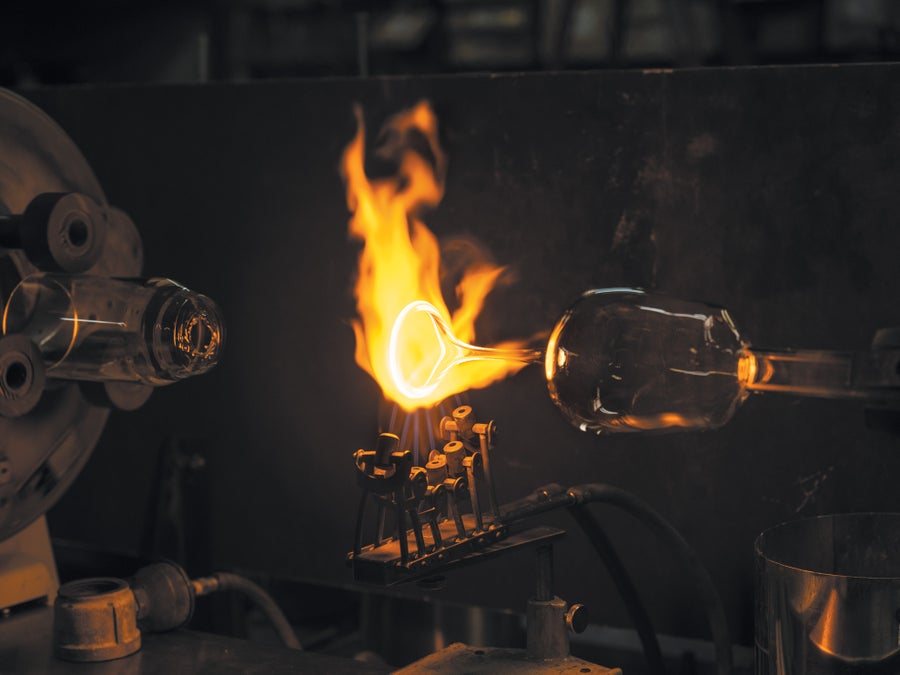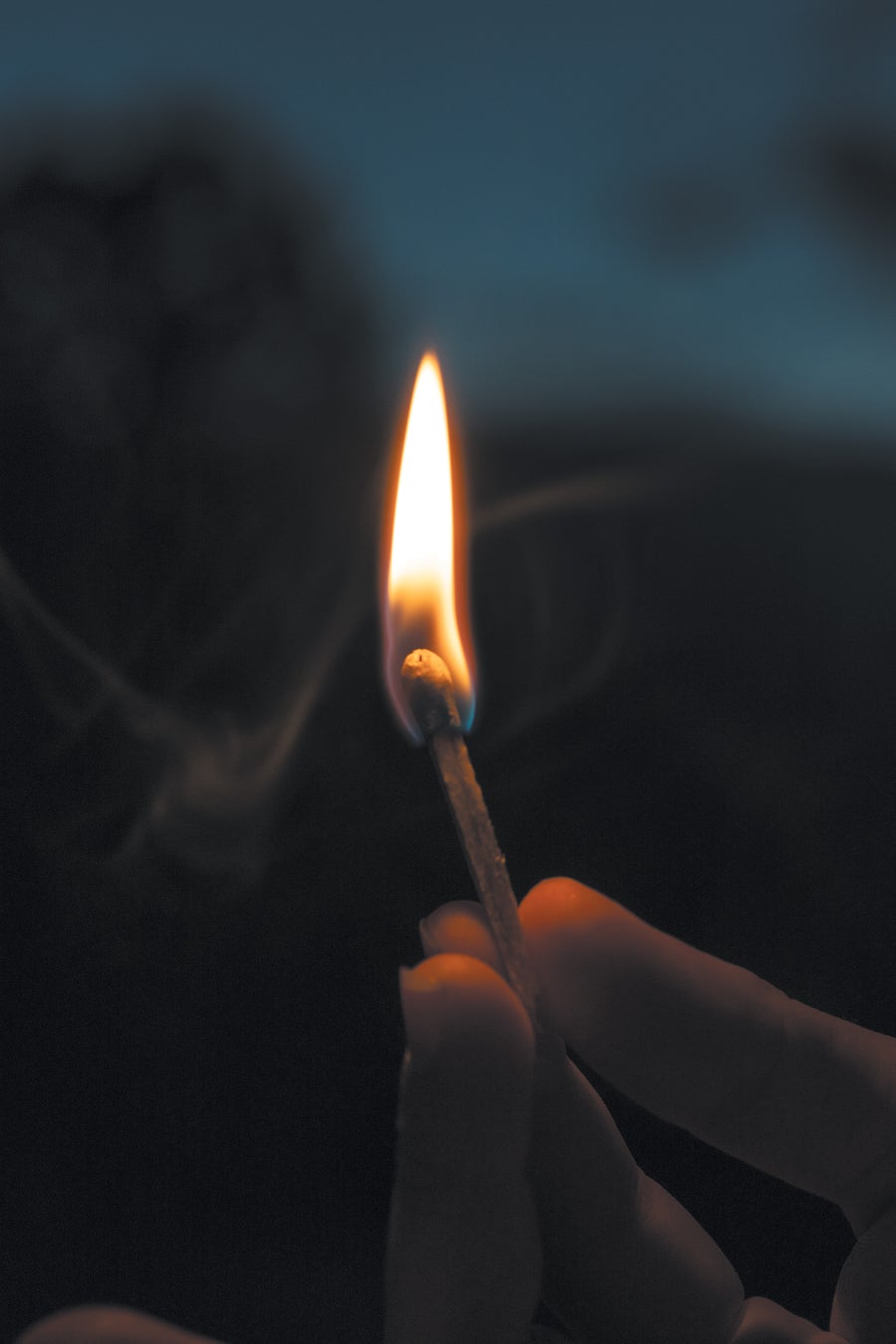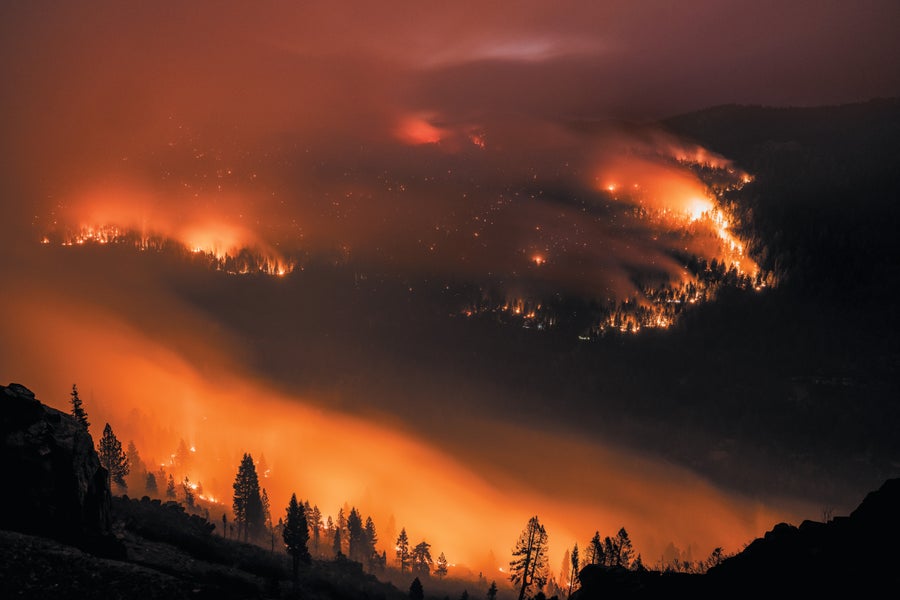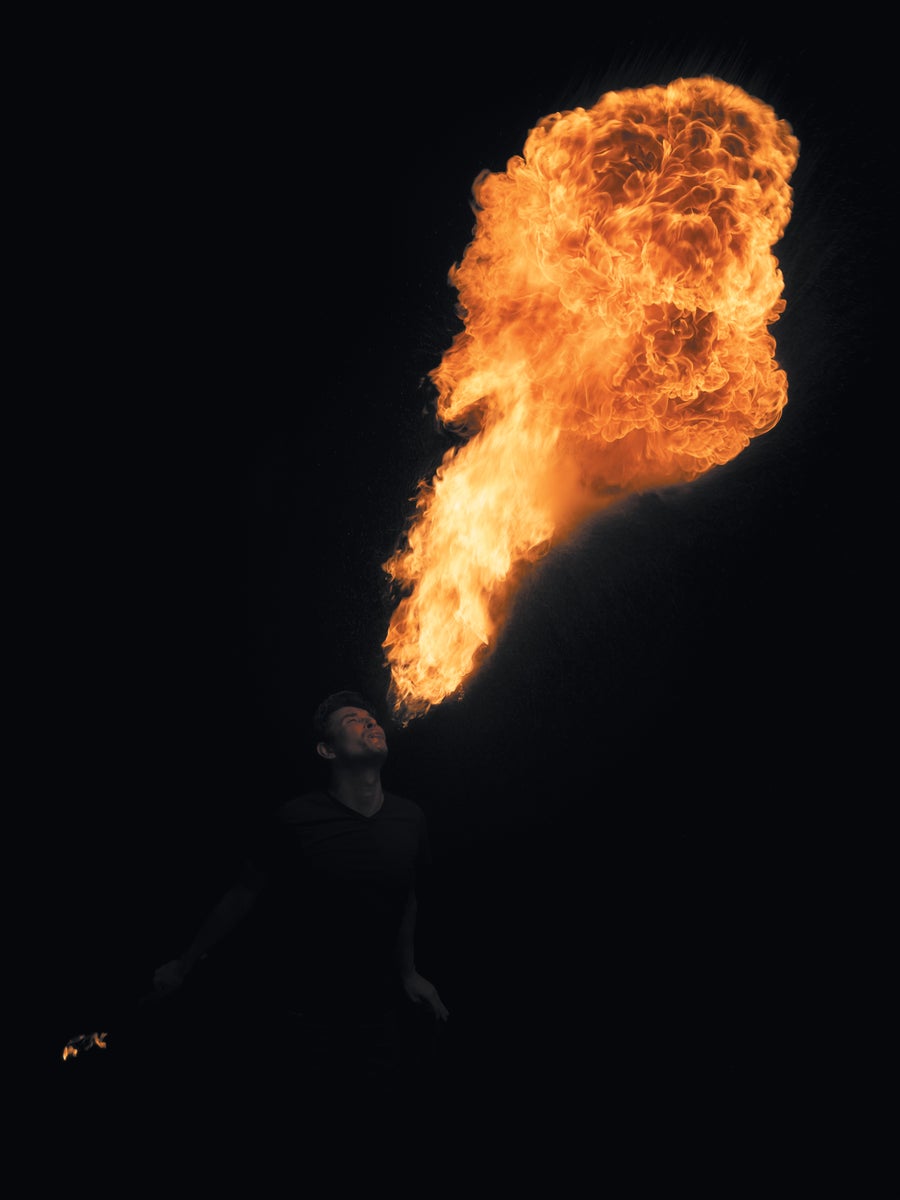When I was 18, a few days after graduating from high school, I found myself on a forest fire crew at Grand Canyon National Park in Arizona. I returned for 15 seasons, 12 as crew boss, and I became a pyromantic. For those years I lived one life at a university and another on the canyon’s North Rim. On a fire crew, you quickly learn how fires can shape a season and how seasons can shape a life. I found a way to reconcile my two lives and became a scholar on fire.
Thank you for reading this post, don't forget to subscribe!My first fire, in June 1967, was a lightning-blasted snag on Powell Plateau, an isolated mesa in the Grand Canyon. Fifty-six years later I’ve written works about fire on every continent, among them primary histories for the U.S., Canada, Mexico, Australia and Europe, including Russia. My focus has been to chronicle the relationship between fire and humans, an alliance that has remade, and unhinged, the planet. Here’s how that happened—and how I think we can restore balance.
Earth is a fire planet, the only one we know of. Earth has fire because it has life. Life created the oxygen fire needs; life created and arranges the fuel it requires. Even the chemistry of fire is a biochemistry: fire takes apart what photosynthesis puts together. As long as terrestrial life has existed, so has fire.
On supporting science journalism
If you’re enjoying this article, consider supporting our award-winning journalism by subscribing. By purchasing a subscription you are helping to ensure the future of impactful stories about the discoveries and ideas shaping our world today.
Fire takes on some properties of the living world it depends on. In ways, it resembles a virus—something not truly alive but that requires the living world to propagate. And like a virus, fire propagates by contagion.
The one requirement of fire that life did not furnish was ignition. That changed with the appearance of a genus, now a single species, that could start fire at will: ours. Humans became unique fire creatures. We used fire to remake ourselves, and then we and fire remade Earth.
We developed more compact guts and big heads because we learned to cook food. We went to the top of the food web because we learned to cook landscapes for hunting, foraging, farming and herding. And we have become a geological force because we’ve begun to cook the planet. Becoming the keystone species for fire made us the keystone species for Earth. Not only can we start (and, within limits, stop) fire, but fire serves as a fulcrum for our desires, good and bad. The fire stick became an Archimedean lever with which we move the world.
Our relationship with fire grew as we domesticated it. Fire had to be birthed, fed, trained, sheltered, tended—we even have to clean up after it. For many intellectuals, from Roman architect Vitruvius to 20th-century French anthropologist Claude Lévi-Strauss, fire control separates the civilized from the barbaric. Fire is also a core technology and a foundation for chemistry. With fire we turn mud into brick and pottery, limestone into cement, sand into glass, ore into metal; fire always seems to exist somewhere in the life cycle of made things and in built environments. And working fires have illuminated, warmed and powered almost all human activities from religious sacrifices to the forging of weapons.
In a sense, early humans and fire made a pact for mutual assistance: each would expand the realm of the other. People would carry fire to places and times in which it could not have existed otherwise. In return, fire empowered humans to go everywhere and do far more than their primate ancestors could ever have imagined. If humans colonize other planets, they will leave Earth on plumes of flame.

Kevin Cooley
Yet limits existed. People and the flames they sparked were constrained by terrain, vegetative fuels and climate. Anthropogenic fire could alter some of those conditions but not at a planetary scale. That began to change about 12,000 years ago, at the end of the last glacial period. A fire-wielding creature met an increasingly fire-receptive world. With tugs and yanks and positive feedback, a planetary makeover began that is rampant today. The Holocene epoch that followed the last glaciation is an Anthropocene or, given the catalytic role of fire, a Pyrocene.
The Pyrocene, a concept and term I created several years ago, is an interpretation of Earth’s fire history as an amalgam of three fires. I’ll use the U.S. to illustrate this idea.
“First fire” is nature’s fire. Geologists have found fossil charcoal that is more than 420 million years old. Lightning was overwhelmingly the ignition source. Yet by the time the 1880 U.S. census mapped forest fires across the country, there was little overlap between lightning-kindled fires and the many burns on the ground. Humans were responsible for the vast majority of the burning. Indigenous peoples used fire for hunting, foraging, fishing and general land maintenance; fire could render landscapes more habitable. Newcomers, too, had a fire heritage that they hauled across the Atlantic, one embedded in agriculture and pastoralism. With contact between peoples, the fires of the two groups met and merged. Native practices better adapted to local sites were often adopted or modified to accommodate livestock and new crops. But even though people working the land never doubted the value of fire in sustaining their livelihoods, elites in the New World often echoed those of the Old World who distrusted and feared fire as messy, dangerous and wasteful, a stigma of primitivism.
These human-handled fires constitute a “second fire,” which is first fire domesticated, or at least tamed, and used to create a landscape more amenable to human habitation. Compare the 1880 geography of fires to that of human settlement, and you’ll find they overlay almost perfectly.
The new settlers came amid a first wave of European expansion. Usually this sprawl is considered in terms of political and economic imperialism. But there was a parallel expansion of plants, animals, diseases and peoples that rewrote fire regimes. The demographic collapse of Indigenous people in the Americas was particularly catastrophic. Spanish conquistador Hernán Cortés noted in a 1520 letter to Spain’s Holy Roman Emperor Charles V that “not a palm” of land (in central Mexico) was untended. Yet as much as 90 percent of those tenders disappeared during the 16th century. A partly domesticated, often feral land replaced the one they had cared for. This upheaval followed plagues and wars that swept Eurasia. Millions of people died, and millions of trees grew. Researchers are exploring how this global swap might have influenced the Little Ice Age that ended in the 19th century.
A second wave of fire expansion began in the late 18th century. This time, in addition to transporting plants and animals, ships carried ideas about fire that proved mighty in refashioning Earth. A scientific revolution—the discovery of oxygen in 1774—deconstructed fire into a chemical reaction called combustion. “Fire” lost its siting in landscapes and its mythical status as a fundamental element and became a subdiscipline of physics, chemistry and mechanical engineering. Combustion was rational and modern, landscape fire primitive and backward.
This scientific redefinition aligned with a technological revolution aimed at fashioning new engines of fire, which gave people unparalleled power. Revealingly, the earliest steam engines—such as those created by pioneering inventors Thomas Newcomen and James Watt in the 1700s—were used to pump water out of coal mines, clearing the way to more fuel for the machines. Steam engines and their voracious progeny helped to disseminate Europe’s understanding of fire and the machines that exploited it. Wherever possible, the new firepower replaced the old, much as gas lighting and, later, electric bulbs did candles, and traditional knowledge and practices were condemned, replaced or suppressed. What happened in industrial Europe also happened in its colonies. Thousands of years of empirical fire experience, coded in lore, story, song lines and oral wisdom, were dismissed, in effect dissolving humanity’s hard-won understanding of how fire works in thousands of landscapes.
This conversion to combustion chambers, especially when used to burn fossil fuels, created the “third fire” that dominates the planet today.
The transition from burning living landscapes to burning lithic (fossil) landscapes constituted something new under the sun. Humanity’s quest for fire had always been about finding new stuff to burn and new ways to burn it. Now the issue was not sources; new reserves of fossil fuels kept being discovered (and still are today). The problem concerned sinks: there was no place to put all the effluent. Fire in living landscapes had evolved with checks and balances that could, within limits, be stretched. Third fire had no such ecological fetters. It could burn day and night, winter and summer, through wet and dry spells. Humanity had suddenly unshackled Prometheus. Its firepower was all but unbounded.
The transition toward fossil fuels as a source of primary energy is regarded as a fundamental driver of global change and has birthed an exponentially increasing body of fire scholarship. Yet as dramatic as its consequences seem, third fire is the latest phase change in an unbroken narrative of humanity and fire. This connectedness is part of the value in viewing the Anthropocene through a pyric prism. It is my particular contribution to the thinking about fire.

Kevin Cooley
The competition between first and second fire expanded to include third fire. I call this shift the pyric transition because the demographics of fire seem to have emulated those of people as they underwent industrialization. Humanity has used its firepower to remake all its habitats, one after another. That third fire abolishes open fire has been taken by Western elites as a measure of modernity. To them, flame is slovenly, backward, even atavistic, tolerable only when used for ceremonial purposes. Working fires are those that are housed in machines.
So fire has disappeared in many domestic settings, sublimated into electricity. It has disappeared in urban environments. Historically, cities burned as often as their surrounding countryside; after all, they were made of the same materials and responded equally to drought and wind. Perhaps the best-known example is the swarm of fires that, on October 8, 1871, burned both the city of Chicago and the town of Peshtigo, Wis., amid a million acres of charred forest around Lake Michigan. But modern cities are designed not to burn, made of materials that have already passed through flames to become cement, glass and metal and then been arranged in ways that retard fire’s spread.
A similar process has occurred in agriculture. The green revolution is about not just clever breeding but the “inputs” that amplify plant growth. Whereas open fire converted dead biomass into nutrients and purged sites of pests and competing plants, modern agriculture relies on petrochemicals that get cooked into fertilizer and biocides and delivered by pumps, planes and tractors powered by fossil fuels. Fallow—potentially arable land left “idle” during the growing season—fell out of favor. European agronomists and officials had always hated fallow, which they regarded as a waste of good land, and burning of these fields added insult. Yet fallowing contributed to agriculture’s biodiversity.
Most spectacularly, the pyric transition extended into remote lands—forest reserves, nature preserves, the distant bush, the outback. Officials applied the new counterforce made possible by third fire and sought to abolish flame in wildlands as they had in other habitats.
There are good reasons to eliminate flames (and their inevitable smoke) in houses and cities. Few residents would want them back except as an occasional amenity. But pushing that change into the countryside and backcountry is different. The provocation was a wave of megafires during the late 1800s and early 1900s that were larger and more lethal than those of previous decades. Locomotives opened land to logging and clearing, which covered landscapes with combustible slash, over which trains scattered sparks from their smokestacks and brakes with abandon. The wreckage unleashed by fire and axe inspired state-sponsored conservation—a global project to protect landscapes, especially forests, from destruction. Between 1891 and 1905 the U.S. began reserving forests, granted them a charter and established an institution, the U.S. Forest Service, to administer it all.
The consensus wisdom was that such fires were intolerable. Bernhard Fernow, an émigré forester from Prussia who headed the Division of Forestry (predecessor to the Forest Service), dismissed the spectacle as one of “bad habits and loose morals,” unworthy of an aspiring great power. Gifford Pinchot, first chief of the Forest Service, likened the challenge of fire protection to the abolition of slavery. Their views were typical of forestry that had emerged from central Europe, which saw fire as a metric of social behavior. They regarded fires as they might malaria or banditry: the world would be better off without them.
As emissaries of modernity, foresters dismissed traditional fire knowledge and practice. Fire control became foundational to conservation, a global project that ranged from the Rocky Mountains of North America to the Central Provinces of India. Foresters in the U.S. made “systematic fire control” their special contribution to world forestry.

Kevin Cooley
They went at it with extraordinary verve and resolve. Burned area decreased sharply, especially after World War II, aided by immense stocks of war-surplus hardware converted for firefighting. Industrial-scale fire protection thus became another marker in the Great Acceleration in global change. In the U.S., the burning of living landscapes plunged as the burning of lithic landscapes bolted upward. The period between the mid-1940s and the mid-1980s was a sweet spot in which technology and active suppression shrank free-burning fires to a pittance. Third fire overwhelmed first and second fire.
By the 1960s the ecological blowback was apparent. Wildlands are not cities; fuels build up, threatening to stoke uncontrollable conflagrations. Ecosystems rot, choked by the absence of fire’s renewing spark. Between 1968 and 1978, federal agencies reformed their policy from suppression-only to a mixed program centered on restoring good fire.
Note that all this happened before any wide concern about climate change. Since then, global warming, like a performance enhancer, has added energy to fire’s expression, and it has globalized the consequences. Even places that have not attempted the pyric transition feel its effects.
Like the pyric transition, the shift in fire-management approach happened quickly. After the Great Fires of 1910—which burned three and a quarter million acres in northern Idaho and western Montana, part of five million across the West—the U.S. spent 50 years trying to take all fire out of its landscapes and then another 50 trying to put good fire back in. The aftershocks promise to continue for a long while.
Let’s widen our aperture and consider fire’s big history. As long as Earth has had terrestrial vegetation, it has had first fire. Second fire appeared in the Pleistocene epoch, competing with first fire. During the Holocene epoch, which began approximately 11,700 years ago, people used fire to recode the patches and pulses of fire across the planet. Third fire arrived over the past two centuries. Its geography is different because it includes an axis of deep time. We are taking stuff out of the geological past, burning it in the present and loosing its effluent into the future. Initially third fire competed with first and second fire; more recently, as a result of humans’ overloading the atmosphere with greenhouse gases and promoting changes in land use, third fire has amplified any kind of fire on the land.
Earth is dividing into two realms of combustion. One burns living landscapes; the other burns lithic landscapes. Satellite views of Earth at night show the two realms clearly: countrysides aflame, cities aglow. Consider the two Koreas, a cameo of Earth’s pyrogeography. South Korea has made the pyric transition and is ablaze with electric lights at night, whereas North Korea is dark but shows abundant landscape fires during the day. South Korea is also now experiencing the wildfires typical of industrial nations, which it is fighting with third-fire-powered machines.
Plenty of disasters can occur when the two realms of combustion meet; think of power lines that start blazes. My favorite contrast is Biosphere 2, a glassed-in, self-contained habitat in Arizona that could be plunked down on Mars. The geodesic structure has a zero-tolerance policy for fire, yet it sits at the base of the Santa Catalina Mountains, which experience fires that are both essential and inevitable (85 percent of the mountains burned in 2003 and 2004). What may be most striking in this scene, and many others like it, is the absence of any middle—a middle ground or a middle narrative that shows humans exercising their historic role as a fire agent and mediating between these two otherwise exclusionary visions.
Widen the aperture further. The Pleistocene’s serial ice ages remade entire landscapes, created continental shifts in biogeography, dramatically changed sea level and spawned serial extinctions. Boosted by the pyric transition, fire is assuming the position previously held by ice. Climate change fomented by third fire is driving off ice and remaking landscapes; it’s causing continental shifts in biogeography, changes in sea level and a wave of extinctions. Instead of outwash plains, we have heat domes, and instead of permafrost, permathaw. The ice of the Pleistocene has yielded to the fires of a Pyrocene.
And the humans? Consider the inhabitants of Fort McMurray in Alberta, Canada. They live in a modern city established to mine tar sands but sited in a boreal forest. In 2016 a fire, most likely ramped up by global warming, bolted out of the bush, burned through the town, shut down Suncor’s mining operations and then continued untrammeled by any efforts to contain it. The residents fled in their petrol-powered vehicles. Fort McMurray—a creation of our fire age. Fort McMurray—a place that burned both ends of its combustion candle. Fort McMurray— a portal to the Pyrocene.
Today we live in a fire age in which ancient prophecies of worlds destroyed and renewed by fire have become contemporary realities, even for people living in modern cities. In the summer of 2023 millions of residents of New York City and other metropolises saw dark-orange daytime skies thick with smoke palls from Canadian wildfires—and breathed in the effluent. Mythology has morphed into ecology. We’re witnessing a slow-motion Ragnarok—a story from Norse mythology in which a great battle burns the world. Climate history is becoming a subnarrative of fire history.

Kevin Cooley
In the 21st century experts in lots of disciplines have proposed ways to cope with fire challenges. Let me close by proposing three responses—a fire triangle for the Pyrocene.
The first side of the triangle: We have too much bad fire. We have too many fires that kill people, destroy communities and trash valued landscapes. In trying to abolish fire, we killed off many of the good fires that make bad ones easier to fight.
But modernity has shaped communities that are particularly vulnerable to fire. The problem of urban fire was solved a century ago. Watching towns burn today is like watching the return of polio or smallpox. Partly, the issue is a matter of definition. We defined the wildland-urban fire from the wildland side, viewing it as wildland fire complicated by houses. We should have defined the problem as urban fire complicated by peculiar landscaping. Define the problem as wildland fire, and it’s nearly unsolvable. Define it as urban, and we know exactly what protective measures need to be taken.
The second side: We have too little good fire. Restoring fire is tricky. As is true of reintroducing any lost species, it’s much easier to take fire out than to put it back in. We need to recover a lot of traditional knowledge while adapting it for current conditions. We can send people with drip torches along old trails, burn cropland set-asides as fallow, and create hybrid management schemes that alloy suppression and prescribed burning of single fires, especially those in nature preserves and in the backcountry.
Note, however, that replacing fossil fuels with renewables as a primary energy source will not be enough. If we use renewables to sustain the same landscapes we have now, we will have the same fire problems, though perhaps tamped down by lessened global warming. The U.S. still has a major fire deficit. As we ratchet down our burning of lithic landscapes, we’ll have to ratchet up our burning of living landscapes. We have a lot of fire in our future.
The third side: We have way too much combustion overall. We must shut down the burning of fossil fuels. We can mitigate its effects only so much.
Here let me leave the U.S. for Victoria, Australia, and the saga of the Hazelwood power station. Hazelwood was erected to burn brown coal from an adjacent open-pit mine. In 2009 power lines in the area kindled fires in the Black Saturday bushfire outbreak. A few years later bushfires ignited the open-pit mine. The two realms of fire were turning on each other. It’s common for open-pit mines to consume the communities around them; in this case, the bush consumed the mine. What parable will we extract from this saga?
As we approach our fire-informed future, I’m reminded of the Old Testament prophet Ezekiel, who declaimed, “They shall go out from one fire, and another fire shall devour them.” We hold a species monopoly over fire. It’s what we do that no other creature does; it’s our role in the great chain of being. For us, fire is not just an ecological process or a tool; it’s a relationship. Through greed and a lust for power, we have turned our ancient companion from our best friend into our worst enemy.
Good fire made us. Bad fire may break us. The choice is ours.

